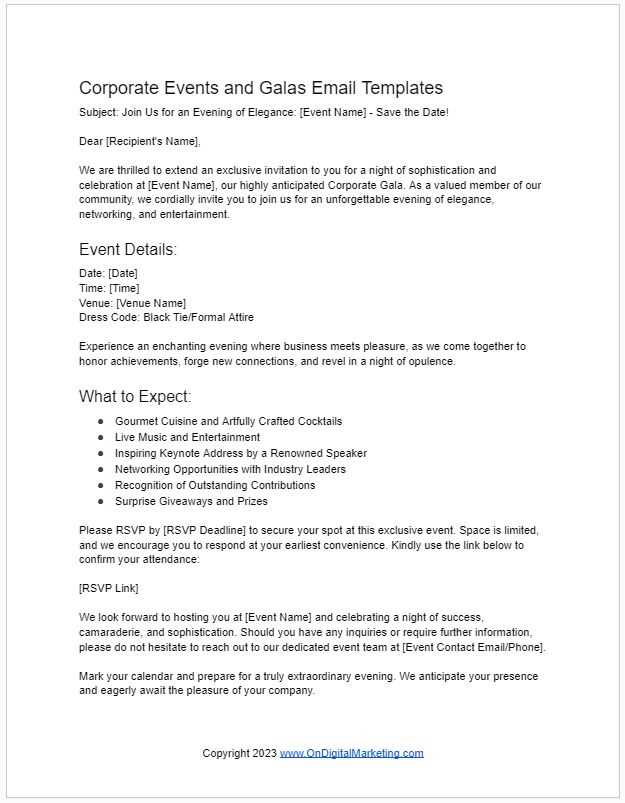
When coordinating events or meetings, clear communication is essential. Whether you’re arranging a team discussion or setting up a client call, ensuring that all participants are on the same page is crucial. A well-constructed message can make all the difference in helping everyone stay organized and informed about upcoming appointments.
One of the best ways to streamline this process is by sending structured notifications that include the most relevant information, such as the time, location, and purpose of the gathering. With the right format, you can ensure that recipients can easily save the details to their schedules, reducing the likelihood of confusion or missed engagements.
In this guide, we will explore how to craft effective communication that not only conveys the necessary information but also enhances clarity and saves time for both the organizer and the participants. By following these best practices, you’ll improve your event coordination and ensure seamless participation from all involved.
Essential Calendar Invite Email Template
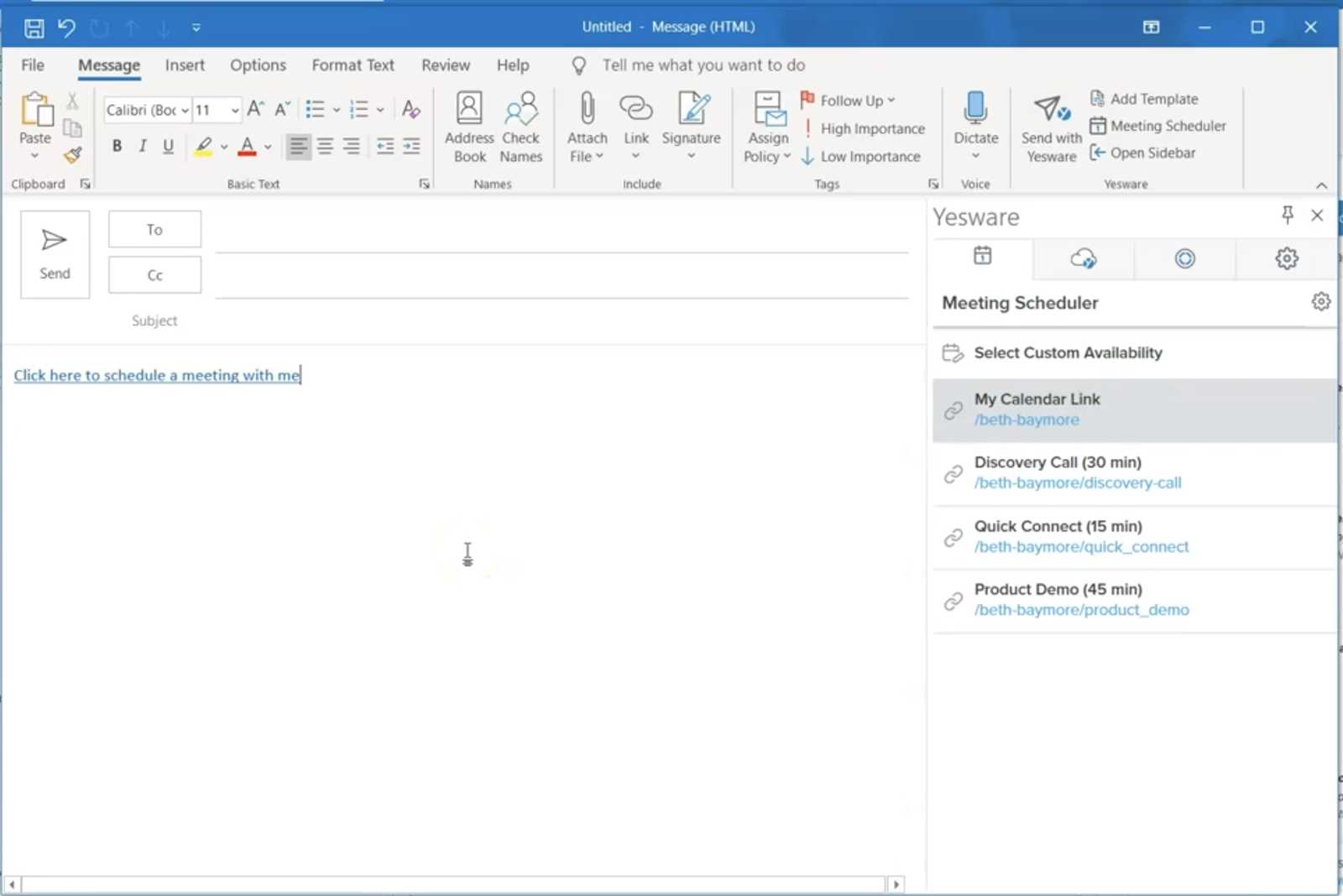
When organizing a meeting or event, it’s crucial to ensure that participants are well-informed and prepared. A clear and well-structured communication can significantly enhance the chances of full attendance and smooth participation. Properly drafted messages that accompany scheduling links or reminders play a key role in conveying all necessary details effectively. These messages should include relevant information in a concise and visually clear format, leaving no room for confusion.
The most important components of such a message include the event’s date, time, location (physical or virtual), and any additional instructions or attachments that may be necessary. It’s essential to maintain a professional tone while ensuring the language is accessible and to the point. Below is an example structure for creating such a message:
| Element | Description |
|---|---|
| Subject Line | A brief, clear statement of the event’s purpose or subject, designed to grab attention. |
| Introduction | Start with a polite greeting and provide a brief overview of the meeting or event. |
| Event Details | Clearly outline the time, date, duration, and location or platform for the event. |
| Agenda or Purpose | Briefly summarize the key topics or goals to be covered during the event. |
| Additional Instructions | Include any preparation required, such as documents to review or links to access the session. |
| Closing | End with a polite and professional closing, reinforcing the importance of attendance. |
By following this structure, you can ensure that your communication is clear, effective, and helps set the right expectations for all participants. Clarity and professionalism are key to a successful interaction.
How to Craft a Perfect Calendar Invite
When organizing an event or meeting, ensuring that all participants are properly informed and prepared is key. A well-constructed notification helps attendees manage their schedules efficiently, reducing confusion and last-minute changes. The goal is to create a clear, concise, and engaging message that provides all necessary details while encouraging timely responses.
To achieve this, focus on including the essential information: date, time, location, and purpose. It’s important to use a format that makes it easy for recipients to understand the main points at a glance. Additionally, ensure your communication is clear about whether the session is in-person, virtual, or hybrid, and include any relevant links, such as video conference URLs or location maps.
Remember to personalize the message when possible. A polite greeting, a brief description of the meeting’s objectives, and a clear call to action will help recipients feel more connected to the event. Avoid overwhelming them with excessive details; instead, provide only what is necessary to ensure everyone is on the same page.
Finally, test the technical aspects before sending. Double-check the date and time to avoid any confusion across time zones, and ensure any attached files or links are working. A well-prepared notice not only helps attendees to plan their time but also sets the tone for a smooth and productive meeting.
Key Elements in an Effective Invite
When organizing an event or meeting, it is essential to communicate important details clearly and concisely. The message should provide all necessary information to participants, helping them easily understand what to expect and how to prepare. A well-structured notification ensures smooth coordination and minimizes confusion, making it more likely that recipients will attend and be well-prepared.
Clear and Concise Information
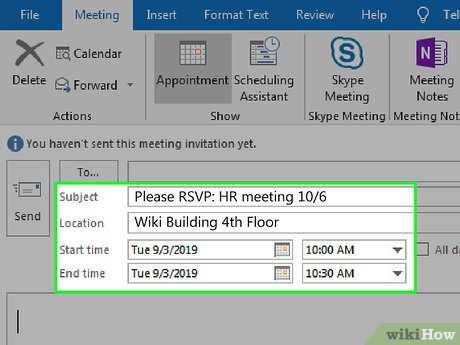
The most crucial aspect of any invitation is clarity. Ensure that all essential details–such as the date, time, location, and agenda–are easy to locate and understand. Avoid long paragraphs or unnecessary information that could distract from the key points. By presenting the necessary information in a simple, organized manner, you make it easier for recipients to grasp the essentials at a glance.
Personalization and Tone
Tailor your communication to the audience. Personalizing the message adds a touch of relevance and increases engagement. Adjust the tone based on the nature of the event: a formal meeting requires a professional tone, while a casual gathering may benefit from a friendlier, more relaxed approach. A thoughtful tone makes the invite feel more welcoming and ensures that the recipient is more likely to respond positively.
Personalizing Your Calendar Invitation
Customizing the details of your scheduling request can make a significant difference in how your recipients perceive the event. A well-tailored message not only reflects professionalism but also creates a more inviting atmosphere, encouraging engagement and prompt responses. Personalization allows you to connect with the recipients on a deeper level, setting the tone for a successful and smooth interaction.
Crafting a Welcoming Message
Start by addressing the recipient by name. A personal touch right at the beginning of your message sets a positive and respectful tone. Instead of using generic greetings, try to acknowledge any previous communication or specific interests related to the meeting. This small gesture shows thoughtfulness and attention to detail.
Adding Relevant Context
Provide a clear and concise description of the purpose behind the meeting. Let the recipient know why their participation is important, what will be discussed, and how it aligns with their interests or expertise. Including this type of information demonstrates that you value their time and involvement. Personalized details can help make the invitation more appealing and relevant to the recipient’s goals.
Lastly, ensure the tone of your message matches the nature of the event. Whether it’s a formal discussion or a casual catch-up, adjusting your phrasing can help convey the right atmosphere, making the invitation feel more aligned with the recipient’s expectations. Personalized communication fosters stronger connections and encourages higher engagement.
Best Practices for Calendar Invite Emails
When organizing an event or meeting, it’s essential to ensure that all participants are well-informed and prepared. Effective communication plays a key role in securing smooth scheduling and minimizing misunderstandings. The way you present event details can significantly affect attendance and engagement. By following some basic yet powerful strategies, you can improve the overall experience for both hosts and attendees.
Clear and concise details are crucial. Provide all necessary information in an easy-to-understand format, including time, location, and any other relevant specifics. Additionally, always consider time zone differences to ensure accuracy for everyone involved.
| Best Practices | Details |
|---|---|
| Use concise subject lines | Keep the subject direct and to the point, highlighting the event’s importance. |
| Double-check date and time | Confirm that the time is accurate for all participants, accounting for time zones. |
| Include relevant links | Share any necessary links, such as video conferencing URLs or event documents. |
| Set reminders | Automate reminders to ensure attendees don’t forget about the event. |
By adhering to these practices, you can enhance the clarity and professionalism of your communications, ultimately ensuring your event runs smoothly and efficiently.
How to Include Meeting Details Clearly
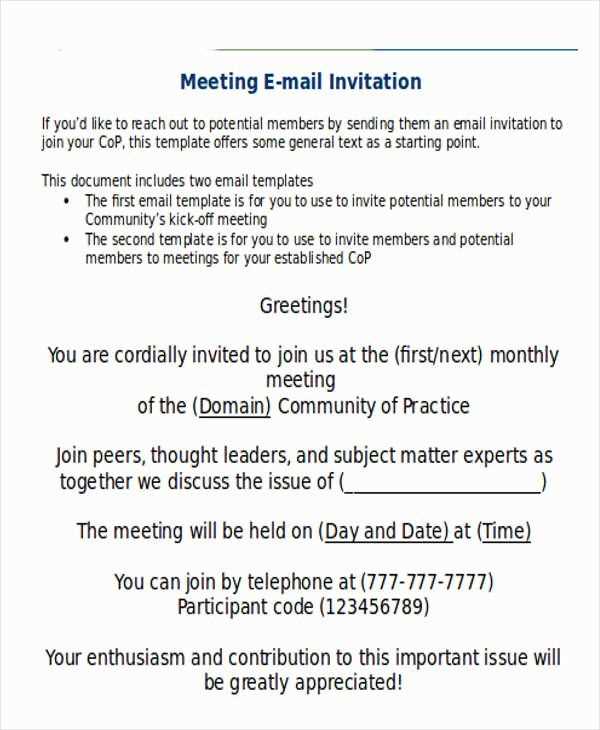
When scheduling an upcoming gathering, it’s essential to convey all necessary information in a concise and easy-to-understand manner. The key is to structure the message so that recipients can quickly grasp the core details without any confusion. Whether it’s a virtual or in-person session, clarity should be your top priority to ensure everyone is prepared and on time.
Start with the essentials: Always include the date, time, and time zone to avoid any misunderstandings, especially when dealing with participants from different regions. This will set a clear framework for the meeting, making it easy for attendees to allocate time in their calendars.
Location or platform details: For physical meetings, provide the address along with any specific instructions to find the venue. In case of an online discussion, include the direct link to the virtual room or platform, along with any necessary access codes or passwords.
Agenda or purpose: Briefly mention the primary goals of the session so participants know what to expect. This helps them prepare adequately and participate more effectively.
Additional reminders: Don’t forget to include any other relevant details, such as the expected duration, documents to review beforehand, or pre-meeting tasks. This will help participants stay organized and focused.
By structuring your communication with these key points, you’ll ensure a smooth and well-organized gathering for everyone involved.
Ensuring Compatibility Across Platforms
When sending out event notifications, it’s crucial to ensure that all recipients, regardless of their device or software, can access the information without issues. Different operating systems, email clients, and applications may interpret and display content in various ways. This can result in discrepancies, making it difficult for some users to view or interact with the details as intended. To avoid this, it’s important to design the communication in a way that guarantees seamless functionality across all major platforms.
One of the key strategies to achieve broad compatibility is to adhere to widely supported standards. Using universally accepted formats, such as plain text alongside HTML, ensures that the message can be read on both basic and advanced systems. Furthermore, testing the communication across multiple devices and platforms before sending it out can help identify any potential issues. In addition, keeping the content simple, with minimal reliance on complex multimedia elements or proprietary features, increases the likelihood of smooth access for all recipients.
Additionally, clear and concise formatting plays a significant role in enhancing compatibility. Ensuring that key details such as dates, times, and links are presented in a standardized way can prevent misinterpretations. For instance, including time zone information in a universally recognized format avoids confusion for users across different regions. By following these best practices, the message is more likely to appear as intended and function properly, regardless of the user’s setup.
Common Mistakes in Event Scheduling
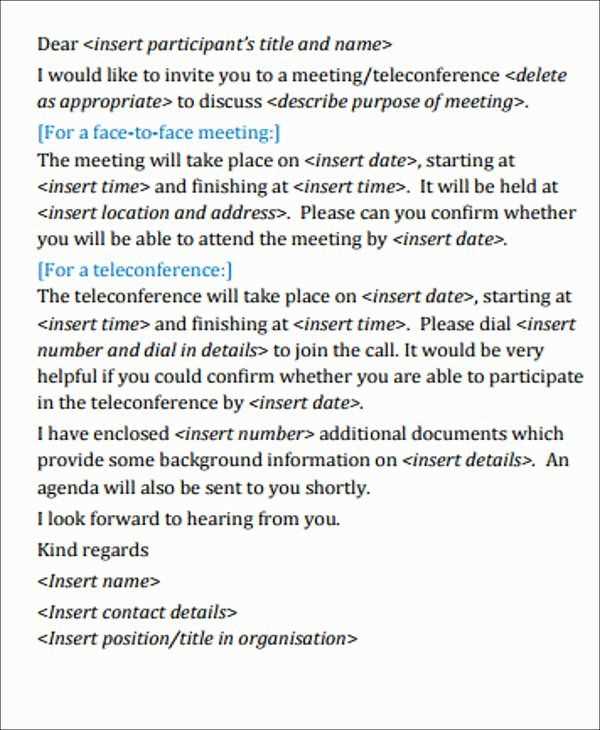
When organizing meetings or appointments, many individuals overlook certain details that can create confusion and frustration for participants. These errors, though seemingly small, can significantly affect the efficiency of planning and the overall experience of all parties involved.
Incomplete or Vague Information
- Not including the meeting’s time zone can cause scheduling conflicts, especially for remote teams.
- Failure to specify the exact location or link to a virtual platform leads to uncertainty.
- Leaving out essential details like the agenda or expected outcomes might result in unprepared attendees.
Unclear Timing and Deadlines
- Setting an ambiguous start or end time without clarification can confuse participants on when to join or leave.
- Not providing a clear deadline for RSVPs or follow-ups can cause delays in decision-making.
- Proposing multiple time slots without a clear structure may lead to back-and-forth negotiations that waste time.
How to Customize Your Email Template
Customizing your message can significantly enhance its clarity, professionalism, and relevance. By tailoring your content to reflect the tone, branding, and specific needs of your audience, you ensure that your communication stands out. Personalization not only strengthens engagement but also helps maintain a consistent brand identity across various communications.
1. Choose the Right Design Elements
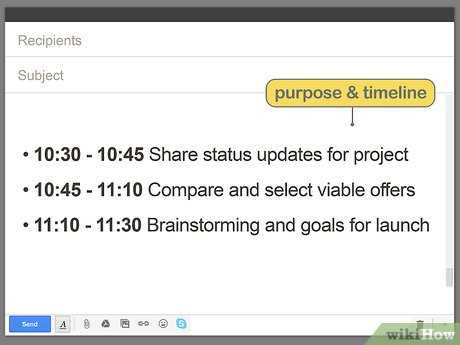
The first step in personalizing your message is selecting design elements that align with your company’s style. This includes colors, fonts, and overall layout. Keeping the design clean and organized enhances readability while staying true to your branding guidelines.
2. Personalize the Message Content
Once the design is set, focus on adapting the content. Address recipients by their names, reference specific details about the meeting or event, and ensure the tone matches the purpose of your communication. Whether formal or informal, your wording should reflect the context and foster a sense of connection with the reader.
| Design Element | Customization Tip |
|---|---|
| Color Scheme | Use your brand’s colors to create a consistent look across all communications. |
| Fonts | Choose easy-to-read fonts that match your brand’s style guide. |
| Images | Include relevant visuals that complement the message, but avoid overloading the layout. |
| Content Tone | Adjust the tone to fit the relationship with the recipient (formal, friendly, etc.). |
Choosing the Right Tone for Your Invite
Setting the appropriate tone for your message plays a crucial role in how your recipient perceives and responds to your request. Whether it’s for a professional meeting, a casual gathering, or a formal event, the language you use can set expectations, convey respect, and influence participation. It’s essential to align your message’s style with the context and your relationship with the recipient to ensure clarity and engagement.
Formal vs. Informal Approach
For business or formal events, it’s important to maintain a tone that is both respectful and concise. Use polite language, a clear structure, and avoid unnecessary informality. For example, instead of saying “Hey, come to the meeting,” you might opt for “We would be pleased to have you join us for the meeting.” On the other hand, for less formal events, such as social gatherings or casual team meetings, a more relaxed, friendly tone is perfectly appropriate.
Consider the Audience
Understanding who will receive your message helps determine the level of formality or warmth you should apply. If you’re reaching out to close colleagues or friends, a conversational tone can make the interaction feel more personal and welcoming. However, when addressing executives or clients, erring on the side of professionalism and clarity is often best. Always consider how your language choice might affect the recipient’s perception of your event and their willingness to participate.
How to Add Actionable Links
Integrating interactive elements into your communications is crucial for enhancing user experience. Actionable links provide recipients with easy access to relevant resources or tasks. By embedding clickable URLs, you can guide users to key locations, such as registration forms, specific pages, or external documents. This section explores how to effectively incorporate these links, making the content more functional and user-friendly.
Types of Actionable Links
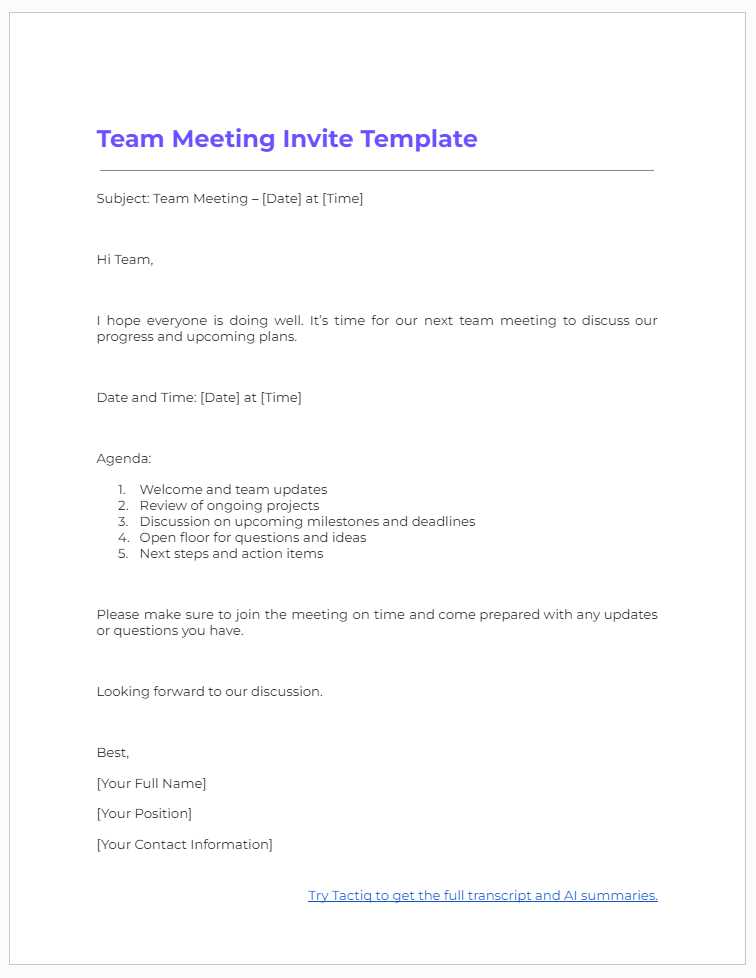
- Call-to-Action (CTA) Links: Direct users to take specific steps, such as confirming participation, joining a platform, or downloading a document.
- Navigation Links: Allow users to quickly access particular sections or pages within your website or platform.
- External Links: Provide access to external resources or partners that are necessary for the task at hand.
Best Practices for Including Links
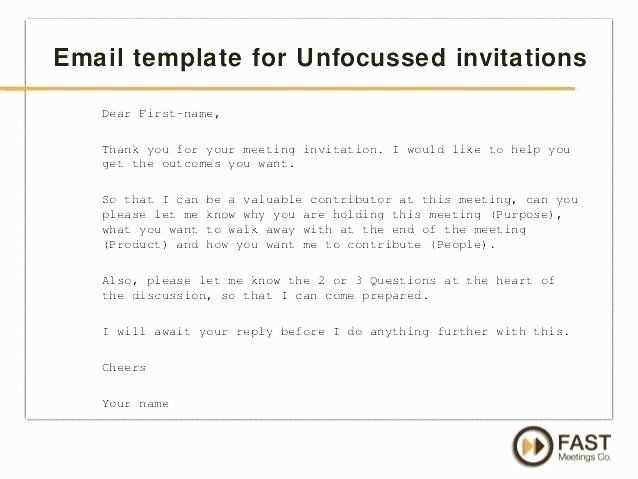
- Use Clear Descriptions: Ensure that the text surrounding the link clearly explains the action the recipient is expected to take.
- Test Links: Always verify that links direct users to the correct destination before sharing.
- Provide Context: Help users understand why they should click by briefly explaining what will happen when they do.
- Prioritize Accessibility: Make sure that all links are accessible and easily clickable on both desktop and mobile devices.
Creating a Follow-up Reminder Email
Sometimes, even with the best intentions, people may forget important engagements or tasks. Sending a timely reminder ensures that the recipient stays informed and prepared. It is essential to strike the right tone, providing helpful details without being too pushy. A well-crafted follow-up communication can serve as a gentle nudge while reinforcing the significance of the upcoming activity.
When designing such messages, consider the following key elements:
- Clear Subject Line: Make it obvious what the reminder is about, without being too vague or too overwhelming.
- Friendly Tone: Aim for a polite, encouraging voice that feels personal and not mechanical.
- Actionable Information: Include everything needed to complete the task, such as dates, times, and relevant instructions.
- Minimalism: Keep the message concise and to the point to avoid overwhelming the recipient.
- Call to Action: End with a simple, direct request or instruction, like confirming attendance or taking the next step.
By including these elements, the reminder can achieve its goal without causing unnecessary stress or confusion. Crafting a thoughtful follow-up shows professionalism while enhancing communication and collaboration.
Best Time Zones for Scheduling Invitations
Choosing the right time zone is crucial when arranging events with participants across various regions. To ensure smooth coordination and avoid confusion, it’s essential to take into account the locations of all attendees and select a suitable time that works for everyone involved.
Key Considerations
- Understanding participant locations
- Being mindful of business hours and cultural differences
- Accounting for daylight saving time shifts
Optimal Time Zones for Global Coordination
- UTC (Coordinated Universal Time): A neutral choice that eliminates bias towards specific regions, perfect for international collaboration.
- EST (Eastern Standard Time): Widely used in North America, ideal for events involving countries in the Americas and Europe.
- PST (Pacific Standard Time): Common for the West Coast of the US, often suitable for those engaging with Asia and the Pacific region.
How to Handle Scheduling Conflicts
When multiple parties are involved in planning a meeting, there is always a possibility that their available time slots may not align perfectly. Dealing with such situations effectively requires clear communication, flexibility, and a structured approach to resolving the discrepancy. By understanding how to manage these conflicts, you can ensure that all participants are accommodated and the meeting takes place without unnecessary delays.
Communicate Quickly and Clearly
Once a conflict is identified, it’s important to address it as soon as possible. Quickly notifying all involved parties about the issue allows for a timely resolution. Be clear about the conflict, and suggest alternative dates or times that may work. Provide a few options to give the other participants flexibility while still aiming to keep the process moving forward.
Offer Multiple Solutions
Offering several alternative time frames shows flexibility and increases the chances of finding a mutually agreeable solution. You may also want to consider different formats for the meeting, such as virtual participation, which can help accommodate participants in various time zones or with conflicting schedules.
Be respectful of others’ time and constraints. Showing empathy when proposing new options fosters a positive environment and helps maintain professional relationships. Sometimes, being flexible with meeting agendas or prioritizing certain attendees can also ease the process.
By approaching scheduling challenges with understanding and a solutions-oriented mindset, you can efficiently navigate conflicts and ensure successful meetings.
Why a Calendar Invite is Important
Organizing events and meetings efficiently requires a streamlined way to ensure all participants are on the same page. This can be especially challenging when coordinating with a group, as people often have varying schedules and preferences. A well-structured scheduling tool provides clarity, reduces confusion, and enhances overall productivity for everyone involved.
Here are a few reasons why using such a tool is essential:
- Clear Communication – Sending detailed event information directly to all attendees ensures that everyone receives the same instructions, reducing the risk of misunderstandings.
- Automatic Reminders – Automated notifications help prevent people from forgetting about important engagements, which can improve attendance rates and punctuality.
- Efficient Time Management – By allowing individuals to quickly review their availability, it becomes easier to select times that work best for everyone, eliminating the need for back-and-forth scheduling.
- Seamless Integration – Many scheduling tools can sync directly with personal or work calendars, providing a cohesive way to manage multiple appointments without overlap.
- Enhanced Professionalism – Sending a formal notification for a meeting gives an impression of professionalism and respect for others’ time, reinforcing a well-organized image.
Incorporating this approach into your planning process makes it simpler to maintain smooth operations, avoid scheduling conflicts, and manage time more effectively.
Tracking Responses and RSVPs
When organizing an event or meeting, knowing whether your participants are available and planning to attend is essential. The ability to monitor who has confirmed their attendance, who is still undecided, and who has declined can help ensure better preparation and a more streamlined process. By tracking responses, you can gauge the level of participation and make any necessary adjustments in advance.
Efficient Response Management
Setting up a system to capture replies is crucial for managing attendance effectively. It’s important to make sure your recipients can easily indicate their availability, whether they are attending, unable to attend, or need to choose a different option. This process should be straightforward to avoid confusion and delays. By using clear calls to action and automated tracking tools, you can quickly compile the results and identify any gaps in responses.
Analyzing the Responses
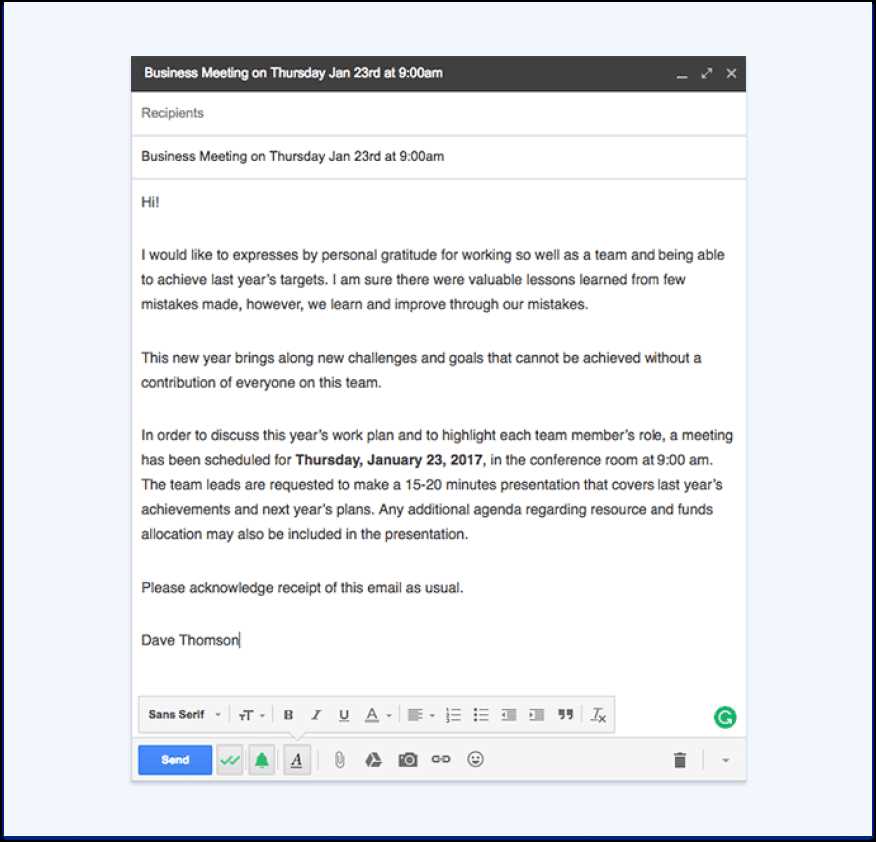
Once responses begin to come in, it is essential to analyze the data and act accordingly. This means reviewing the responses to identify trends, such as the number of people attending or any special requirements they might have. Automated systems can help sort the responses, making it easier to send reminders, adjust plans, or communicate any necessary changes to the participants in a timely manner.
Tips for Sending Invitations Efficiently
When scheduling meetings or events, ensuring that all participants are well-informed and prepared is crucial. Using the right tools and strategies can make the process smoother, helping you avoid confusion or missed details. Below are some effective practices for sending invitations that ensure everyone stays on the same page and your schedule remains organized.
1. Provide Clear and Complete Details
- Make sure all the essential information is included: date, time, location, agenda, and any necessary instructions.
- Be specific with the time zone to avoid misunderstandings, especially if participants are from different regions.
- Use simple, direct language to minimize any ambiguity in your message.
2. Automate and Personalize Where Possible
- Leverage scheduling software that allows you to automate the sending process, saving time and effort.
- Personalize your message by addressing participants by name, and ensure the subject line is clear and attention-grabbing.
- Provide participants with options to confirm, reschedule, or decline, giving them flexibility and reducing the need for follow-up communication.